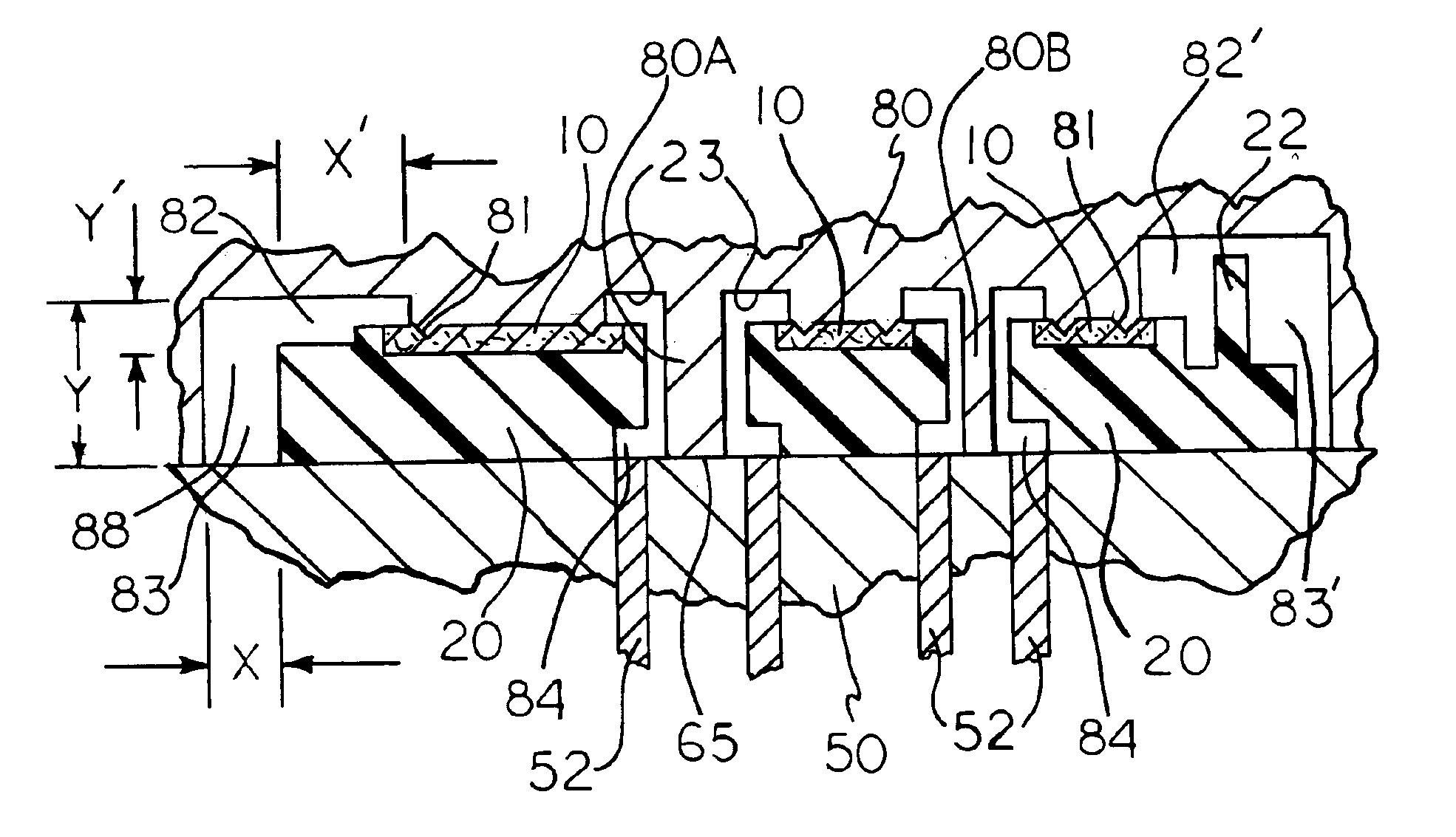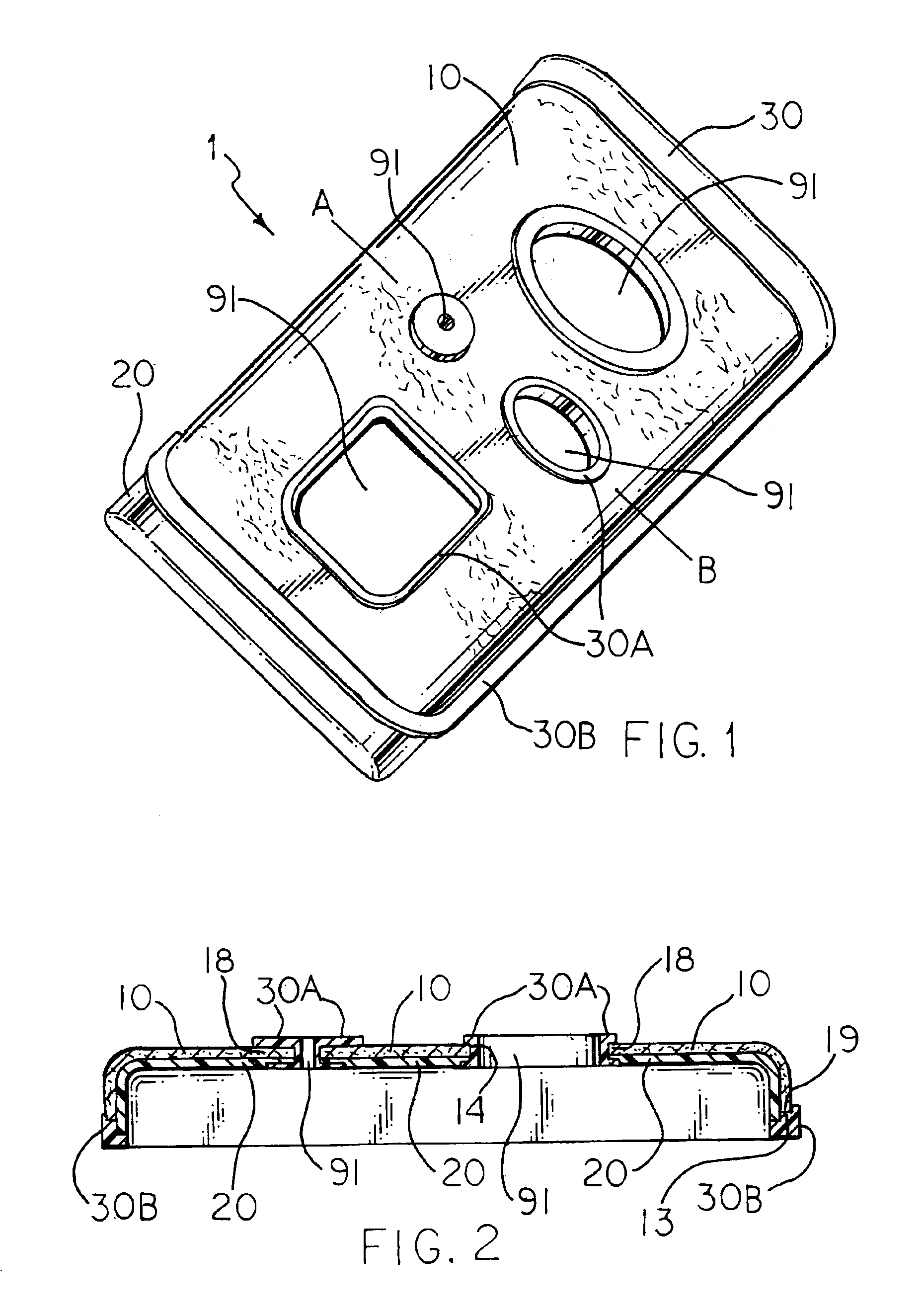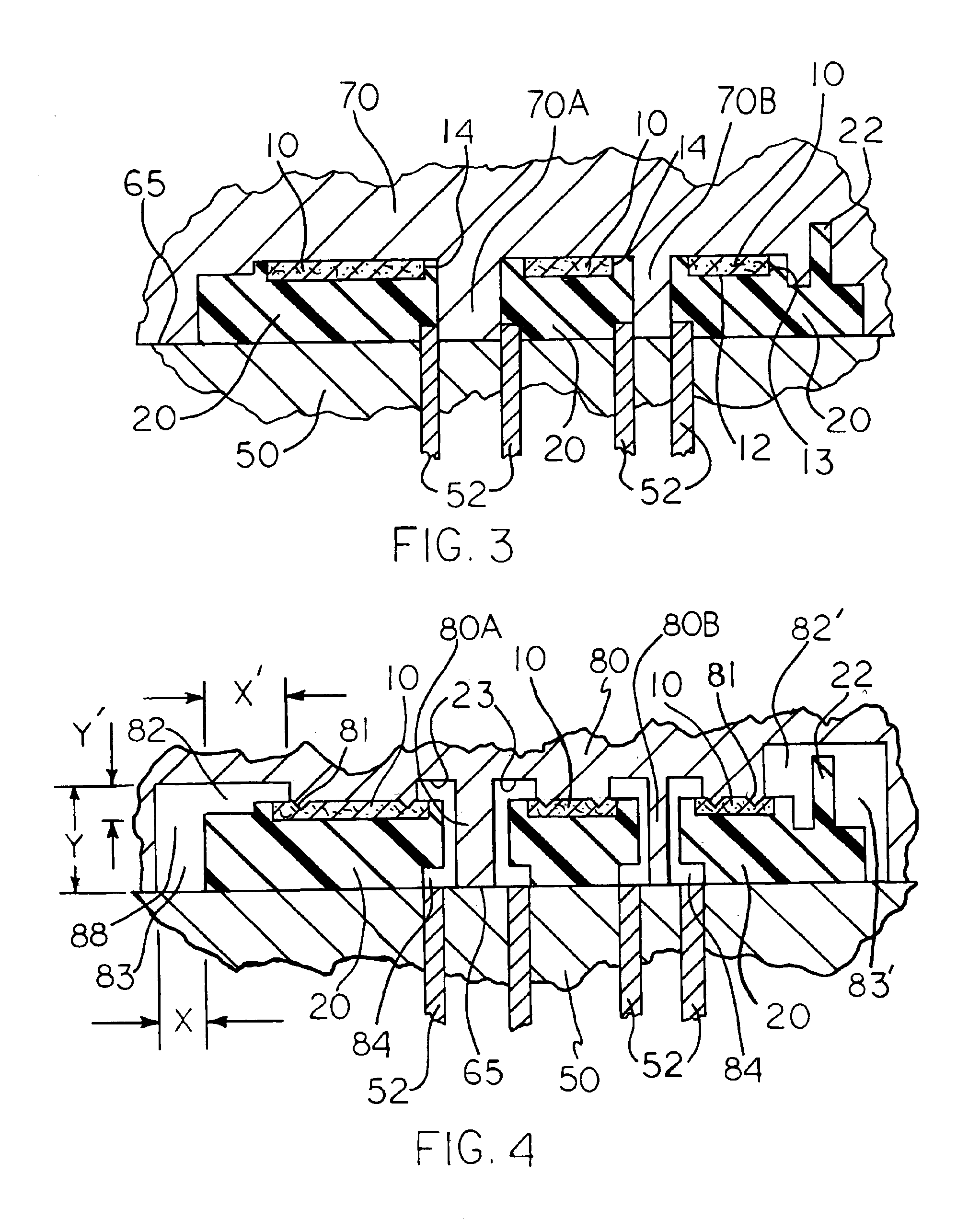Molded parts with fabric surface areas and processes for their production
a technology of molded parts and fabric, applied in the directions of applications, transportation and packaging, other domestic articles, etc., can solve the problems of poor part appearance, inability to use a separate trim piece, and inability to mention any technique for securing and covering the fabric edges
- Summary
- Abstract
- Description
- Claims
- Application Information
AI Technical Summary
Benefits of technology
Problems solved by technology
Method used
Image
Examples
examples
[0046]A part according to the present invention as shown in FIG. 1 was designed and produced generally as shown in FIGS. 1 through 6 and discussed above. The fabric is a non-woven polyester fabric which was laminated with a polycarbonate film 0.005 inches (approx. 0.015 mm) thick by the use of a thermally initiated adhesive, Dow adhesive film. The lamination was conducted at 220 degrees C. (set-point temperature for heating the rolls) on a two-roll laminator. The resulting laminate was pre-cut to the desired size and shape (including internal openings) such that the fabric does not reach the ends or edges of the empty mold cavity when it is inserted into the desired location between the cavity and the core on an injection mold. The desired fabric surface is placed against the cavity and held in place by the use of vacuum. The first injection molded material, a PC / ABS blend, is injected into the mold coming in contact with the PC film. The flow of the injection molded thermoplastic, ...
PUM
| Property | Measurement | Unit |
|---|---|---|
| Flow rate | aaaaa | aaaaa |
| Area | aaaaa | aaaaa |
| Surface area | aaaaa | aaaaa |
Abstract
Description
Claims
Application Information
 Login to View More
Login to View More - R&D
- Intellectual Property
- Life Sciences
- Materials
- Tech Scout
- Unparalleled Data Quality
- Higher Quality Content
- 60% Fewer Hallucinations
Browse by: Latest US Patents, China's latest patents, Technical Efficacy Thesaurus, Application Domain, Technology Topic, Popular Technical Reports.
© 2025 PatSnap. All rights reserved.Legal|Privacy policy|Modern Slavery Act Transparency Statement|Sitemap|About US| Contact US: help@patsnap.com



